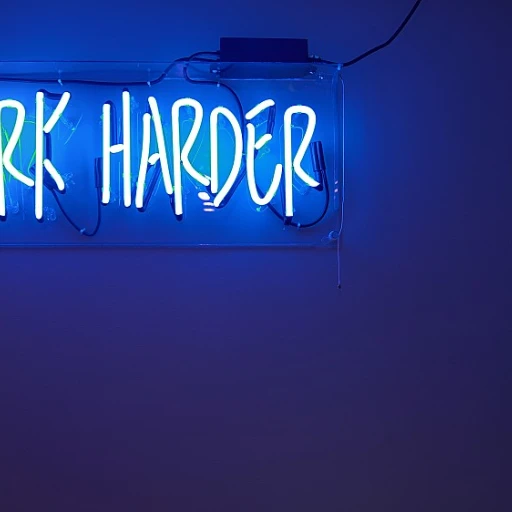
Defining Attrition in Reward Programs
The Concept of Attrition in Reward Programs
Understanding attrition is crucial for businesses aiming to maintain effective reward programs. In the context of these programs, attrition refers to the rate at which participants, whether customers or employees, stop participating or engaging with the reward system. This departure can result in decreasing user numbers and can significantly affect the program's success. High attrition rates can signal potential issues that need to be addressed to retain both customers and employees. While attrition generally refers to losing participants, it's essential to distinguish it from employee turnover. Employee turnover focuses more on the company's workforce dynamics, while attrition in reward programs specifically examines the disengagement from the reward scheme itself. Key factors influencing these rates include the attractiveness and relevance of rewards offered, customer and employee experience, and the level of engagement participants feel. Programs that lack in these areas typically see higher attrition. For companies, maintaining a low attrition rate is imperative for ensuring both customer loyalty and employee retention. Grasping the intricacies of attrition rates can help businesses develop strategies to minimize drop-offs, enhancing overall program success. For more insights and details, delve into our comprehensive guide on understanding attrition in reward programs.Factors Influencing Attrition Rates
Key Drivers of Attrition in Reward Programs
Understanding the factors that influence attrition rates in reward programs is crucial for companies aiming to enhance employee engagement and customer loyalty. High attrition can be a significant challenge, impacting both employee retention and customer satisfaction. Here are some of the primary factors that contribute to high attrition rates:
- Lack of Engagement: When employees or customers do not feel engaged with the reward program, they are more likely to lose interest over time. Engagement is key to maintaining long-term participation and reducing turnover rates.
- Inadequate Rewards: If the rewards offered do not meet the expectations or needs of the participants, they may not see the value in continuing with the program. This can lead to a higher attrition rate as participants seek more fulfilling opportunities elsewhere.
- Poor Communication: Effective communication is essential in keeping participants informed and motivated. Without clear and consistent communication, participants may feel disconnected from the program, leading to increased attrition.
- Complexity of the Program: Programs that are overly complicated or difficult to understand can deter participation. Simplifying the process and making it user-friendly can help reduce attrition rates.
- Lack of Feedback Mechanisms: Providing avenues for employee feedback and customer feedback can help companies understand the needs and preferences of participants. Without this understanding, it becomes challenging to make necessary adjustments to the program.
Addressing these factors can significantly enhance employee and customer experience, ultimately reducing attrition. For more insights on engaging employees, consider exploring creative culinary ideas for employee appreciation.
Typical Attrition Percentages
Gauging Typical Attrition Percentages in Reward Programs
Understanding attrition rates can be challenging, especially when trying to set benchmarks for reward programs. Companies often seek typical attrition percentages to assess their own programs and identify if they fall within average ranges or if there is a cause for concern. Unfortunately, there isn't a one-size-fits-all statistic for attrition rates in reward programs, as these rates vary depending on multiple factors like the industry, size of the organization, and the nature of the rewards offered. However, some generalized figures can still provide a useful reference point.- Industry Differences: For example, the retail and hospitality sectors tend to experience higher attrition rates due to the transient nature of work in these industries. On the other hand, industries like technology and finance may see lower attrition rates because of higher employee engagement.
- Program Maturity: New reward programs might see higher attrition rates during the initial periods as companies work out the most effective strategies to retain customers or employees. Established programs with proven benefits usually stabilize, resulting in lower turnover rates.
- Employee vs. Customer-Focused Programs: Employee reward programs might exhibit different attrition dynamics compared to customer loyalty schemes. Employees are generally more stable if the rewards align with long-term career goals. In contrast, customers require continuous value and engagement to avoid defection to competitors.
- Typical Percentages: While figures can differ, a general typical attrition rate in reward programs might hover around 15-25% annually, though this can be significantly less with effective enhancing employee engagement or customer loyalty strategies.
Impact of Attrition on Business
The Ripple Effect of Attrition on Business Operations
Understanding attrition rates in reward programs is crucial for companies aiming to maintain a competitive edge. High attrition can significantly impact a business, affecting both its financial health and its reputation. When employees or customers frequently leave a program, it signals potential issues in engagement or satisfaction, which can lead to broader challenges.
First, high attrition rates can lead to increased costs. Companies often invest substantial resources in developing and maintaining reward programs. When these programs experience high turnover, the costs associated with recruiting and training new participants or employees can escalate. This not only strains the budget but also diverts attention from other strategic initiatives.
Moreover, attrition affects employee engagement and retention. When employees see a high turnover rate, it can lead to decreased morale and productivity. This is particularly true if the reasons behind the attrition are not addressed. Employees may feel undervalued or disconnected, leading to further attrition and a vicious cycle of turnover.
Customer loyalty is another area impacted by high attrition. Reward programs are designed to enhance customer experience and foster long-term relationships. However, if customers frequently leave the program, it can indicate dissatisfaction, which can tarnish the company's brand image. This loss of loyalty can be detrimental, especially in competitive markets where customer retention is key to success.
Finally, understanding the impact of attrition on feedback mechanisms is essential. High attrition rates can skew feedback data, making it difficult for companies to accurately assess the effectiveness of their programs. Without reliable feedback, companies may struggle to implement effective strategies to reduce attrition and improve overall program performance.
In conclusion, companies must prioritize strategies to reduce attrition, focusing on enhancing employee and customer engagement. By addressing the root causes of high attrition, businesses can improve retention rates and ensure the long-term success of their reward programs.
Strategies to Reduce Attrition
Proven Approaches to Minimize Attrition
Reducing attrition rates in reward programs calls for strategic planning and continuous efforts. Companies that emphasize employee engagement and retention can enjoy improved reward program outcomes. Here are some effective strategies to consider:- Enhance Employee Engagement: Active engagement is paramount. Companies should create an inclusive environment that encourages employees to participate actively. Regular team-building activities and open communication can contribute significantly to enhancing employee satisfaction and retention.
- Personalized Rewards: Customizing rewards to fit employee preferences and needs can foster customer loyalty and lessen high attrition. Understanding what employees value most can help design a reward system that caters to their expectations, thus improving retention rates.
- Regular Feedback: Gathering employee feedback is a crucial step. Companies should have mechanisms in place for regular feedback to understand employee concerns and experience. This proactive approach can help address issues before they lead to employee turnover.
- Career Development Opportunities: Providing opportunities for career advancement can be a strong motivator for employees. Offering training programs and workshops not only improves employee retention but also invests in their long-term growth within the company.
- Flexible Work Options: Flexibility in work arrangements can be a game-changer. Allowing employees the option to work remotely or have a flexible schedule can significantly reduce attrition rates by accommodating their personal needs.












